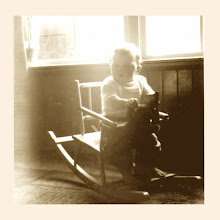 In this post I would like to share with you a rather obscure lp, produced in Nigeria but containing music from Congo. The obscurity is limited to the production. The artists, although not credited on the sleeve nor on the label (for copyright reasons?), are of the well-known variety. Of the ten tracks on this compilation four are by the O.K. Jazz, two by the Negro Band, two by Rock-a-Mambo and two by the the - perhaps less known - Dynamic Jazz.
In this post I would like to share with you a rather obscure lp, produced in Nigeria but containing music from Congo. The obscurity is limited to the production. The artists, although not credited on the sleeve nor on the label (for copyright reasons?), are of the well-known variety. Of the ten tracks on this compilation four are by the O.K. Jazz, two by the Negro Band, two by Rock-a-Mambo and two by the the - perhaps less known - Dynamic Jazz. Although I am not sure about the Dynamic Jazz songs, I estimate all the tracks to be from the late 1950s. The songs performed by the O.K. Jazz were composed by that great guitarist Antoine Armando, better known as Brazzos, and were originally released as Loningisa 189 (in 1957) and 211 (in 1958). The songs by both the Negro Band and Rock-a-Mambo* were originally released on the Esengo label as Esengo 192 ("Kumaye"), 194 ("Senhorita"), 119 ("Brigitte") and 71 ("Bakoule Bidama"). And Dynamic Jazz made records (and quite a few) for the Ngoma label. Both "Rumbita Dynamic Jazz" and "A mi amor bonita" were at one point released on the Super 45 (EP) 1005.
As a compilation this record deserves excellent marks. It features some of the Greats of the époque d'or of Congolese music. "Bakoule Bidama", for example, not only stars singer Rossignol, but also Kabasele himself, as backing vocalist (and a brilliant one, if you ask me!), plus Essous and Nino Malapet. Franco and Vicky Longomba both are prominent in the O.K. Jazz songs. But that is only to be expected.
Needless to say that my favourites are the tracks by Brazzos. I am still trying to figure out what latin original 'inspired' "Cuidado Conamallo" (which I suspect should be "cuidado con la mano"). I am inclined to believe that the O.K. Jazz copied the song (or perhaps just the name of the song) from other Congolese orchestras. I recall having heard a version by either Rock-a-Mambo or African Jazz (if I bump into it I´ll post it).
Lyric-wise there is a lot to be enjoyed, especially in that same song. With Vicky in fluent jibberish-spanish: "Venga, chiquita! Baila! Awela-wela" (or "abuela, abuela"?) ", si yo me muero muero muero de todo mi amor".
Who invented these lyrics?
ISP 101
* Actually "Brigitte" is credited in the Esengo catalogue to Lucie Yenga et l'African Rock.























